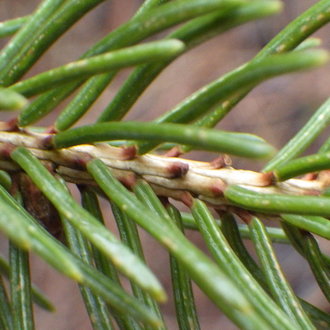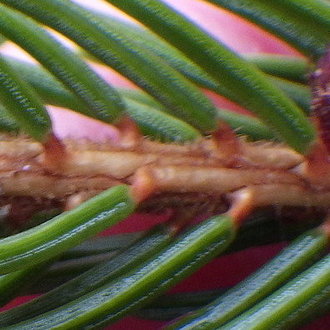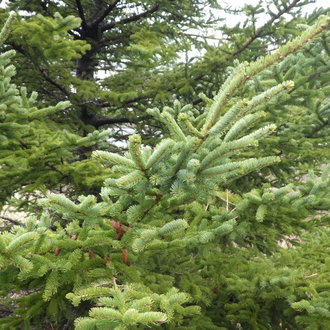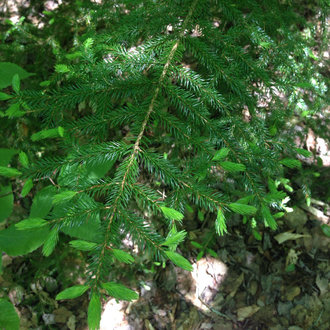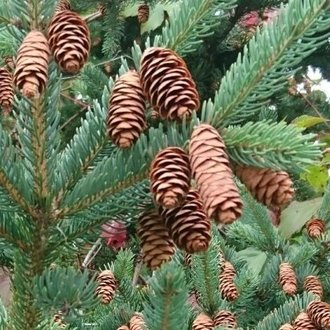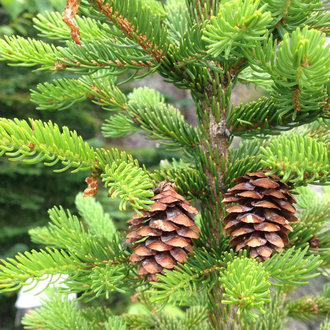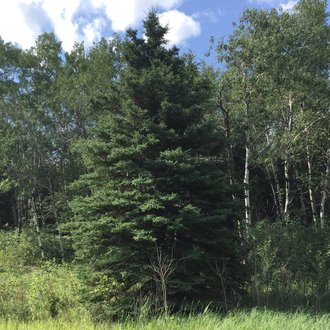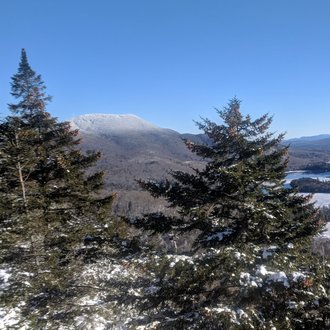White Spruce vs Red Spruce
White and red spruce are usually relatively easy to distinguish by their foliage color and cones, but they can be confused because they have a similar shape. In the northeast, where red spruce can also be found at low elevations, both species often occur together in the same habitats.
White Spruce (Picea glauca) | Red Spruce (Picea rubens) |
A conifer native to the northernmost reaches of North America; often found on richer sites than black spruce. | An evergreen tree of eastern North America; the most southerly-distributed spruce of the east, found at high elevations in the south of its range. |
Twigs are paler in color and lack hairs. Photo © Ben Armstrong, CC BY 4.0. | Twigs hairy, especially on new growth; twigs usually more reddish in color. Photo © Ben Armstrong, CC BY 4.0. |
Foliage pale bluish. Twigs pale. Photo © Ben Armstrong, CC BY 4.0. | Foliage rich green, not bluish. Occasionally yellowish. Foliage color contrasts starkly with darker, often reddish twigs. Photo © Charlie Hohn, CC BY 4.0. |
Larger cones, longer relative to their width. Photo © Shawn Treelife, Public Domain. | Smaller cones, shorter relative to their width. Photo © Ken-ichi Ueda, CC BY 4.0. |
Often grows together with red spruce at low elevations, but tends to grow on richer sites than red spruce. Photo © Mary Krieger, CC BY 4.0. | Found together with white spruce at low elevations in the northeast, but also found at higher elevations and more likely on nutrient poor or rocky sites where other trees struggle. Photo © Steve DeGrace, CC BY 4.0. |
References & External Resources
These short lists show only links helpful for ID. For a complete list of references and resources also covering other aspects of ecology, visit the links section of the full article on each plant, which is the first entry here.



